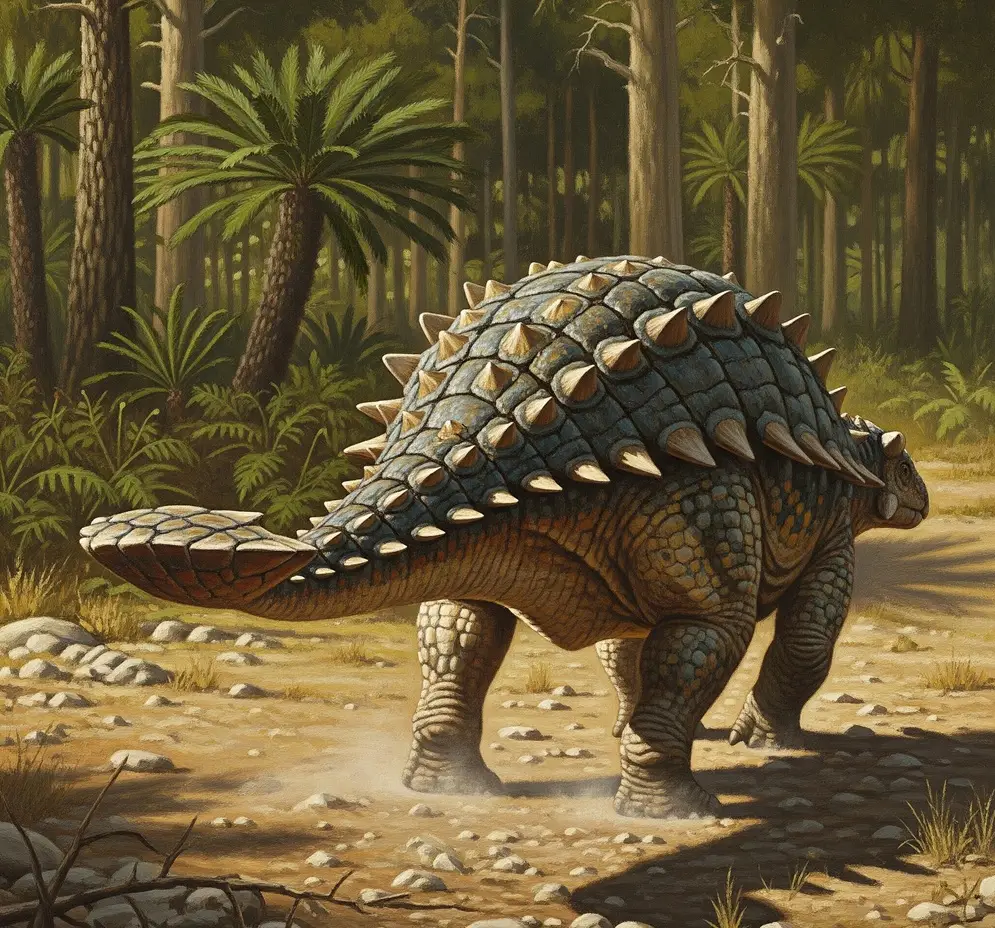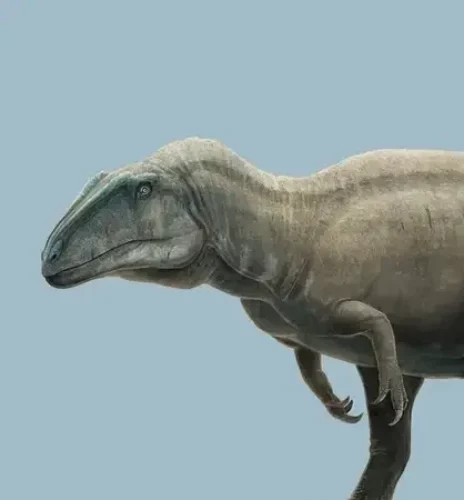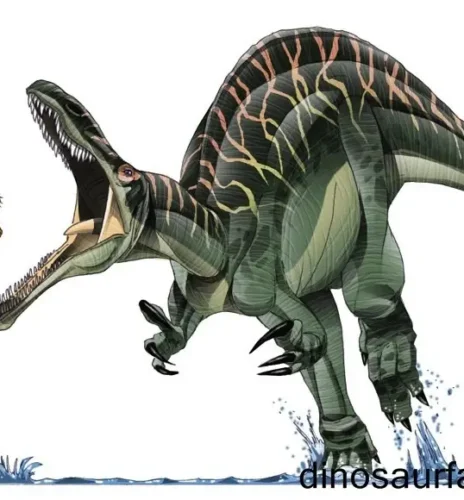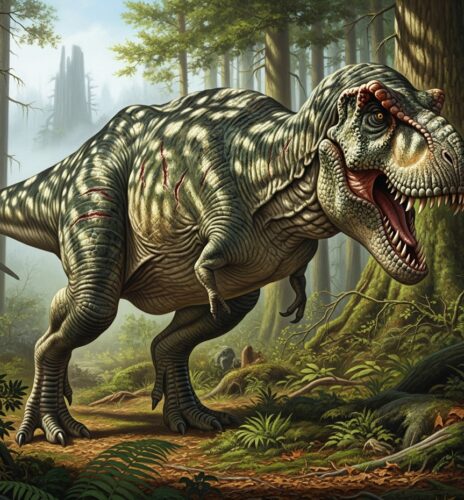The Ankylosaurus is an icon of the dinosaur world, instantly recognizable by its formidable armor and powerful tail club. Often referred to as the “walking tank” of the Cretaceous period, this herbivore was a master of passive defense, but recent scientific discoveries are revealing that its life was far more complex and dynamic than its armored exterior suggests. From its unique diet to its surprising locomotion, the story of Ankylosaurus is a testament to the incredible evolutionary arms race that defined the age of dinosaurs.
While its image is a familiar one, paleontologists are still working with a relatively incomplete fossil record of the genus Ankylosaurus itself. Many of its famous relatives, like Euoplocephalus and Zuul, are known from more complete skeletons. Nevertheless, what we have learned about Ankylosaurus and its close kin provides a rich understanding of this fascinating group.
Here are five of the most interesting facts about the Ankylosaurus:
1. A Tail Club Built for Bone-Breaking: The most famous feature of the Ankylosaurus is its massive, bony tail club. For years, scientists believed it was a defensive weapon used to fend off predators like Tyrannosaurus rex. While it certainly could have been, new research, including a 2022 study on a related ankylosaur called Zuul, suggests it may have been primarily used for combat with other ankylosaurs. Paleontologists found evidence of damage on the sides of the Zuul specimen that corresponded to the impact of a tail club, implying they fought each other for dominance, territory, or mates. However, biomechanical studies have shown that the largest tail clubs could generate forces sufficient to shatter a theropod’s shinbone, so it was a versatile tool for both defense and intra-species rivalry.
2. A Dinosaur with a Unique Gait: Ankylosaurs are often depicted as slow, lumbering creatures, and for good reason—their heavy armor and squat build would have made running a challenge. However, a groundbreaking discovery of ankylosaurid footprints in Canada, published in April 2025, has offered a new perspective. The three-toed tracks, belonging to a new species named Ruopodosaurus clava, reveal a surprisingly narrow, bird-like gait, with the left and right feet aligning in a “supermodel on a runway” fashion. This suggests that while they were not sprinters, their movement was more efficient and purposeful than previously imagined.
3. A Specialized Grazer: Ankylosaurus was a low-Browse herbivore, feasting on ferns, cycads, and other tough, low-lying vegetation. Its broad, shovel-like snout and small, leaf-shaped teeth were perfectly adapted for grazing. Instead of a strong chewing motion, it likely had a powerful tongue to pluck vegetation and used a back-and-forth grinding motion to process its food. This specialization meant it avoided competition with other large herbivores, like the taller sauropods and hadrosaurs, allowing it to thrive in a diverse ecosystem.
4. Armor That Was More Than Just Plating: The armor of an Ankylosaurus was a masterpiece of biological engineering. It was composed of hundreds of bony plates, or osteoderms, embedded in its skin, ranging from small, pebble-like bumps to large, flat scutes and rows of spikes. This armor was not just a static shell; it was a complex system that provided protection from the top and sides, while still allowing for some flexibility for movement and breathing. Recent studies also suggest that the armor may have played a role in thermoregulation, helping the animal to regulate its body temperature.
5. A Dinosaur that Lived in Mixed Herds: The discovery of individual Ankylosaurus fossils has long led to the assumption that they were solitary creatures. However, a remarkable find in Dinosaur Provincial Park in Alberta, Canada, has challenged this view. In a study published in August 2025, researchers unveiled a tracksite showing footprints of several different dinosaur species, including ceratopsians and a single ankylosaur, traveling together. This provides the first-ever evidence that these dinosaurs may have formed multi-species herds, much like modern-day wildebeest and zebras, possibly as a defense strategy against common predators like tyrannosaurs.
The Question of Speed: Could an Ankylosaurus Run?
The idea of a lumbering, slow-moving Ankylosaurus is a persistent one, and for good reason. Its wide, robust body and short limbs were built for stability, not speed. While its gait was more efficient than once thought, the consensus among paleontologists is that it was not a fast runner.
Studies on the biomechanics of its relatives suggest that the musculature and skeletal structure of an ankylosaur would have prevented it from achieving high speeds. Its primary defensive strategy was not to flee, but to stand its ground, crouch low to protect its vulnerable underbelly, and use its tail club to deliver a devastating blow. The very existence of its armor and club implies that outrunning a predator was not its first line of defense. It was a creature designed for brute endurance and self-preservation, perfectly adapted to withstand a world of predators rather than to escape it.
Resources:
- Arbour, V. M., & Currie, P. J. (2015). Ankylosaurid dinosaur tail clubs from the Late Cretaceous of Alberta, Canada: A study of their morphology, growth, and function. Journal of Vertebrate Paleontology, 35(2), e982548.
- Arbour, V. M., & Zelenitsky, D. K. (2014). A new species of ankylosaurid dinosaur from the Upper Cretaceous of Alberta, Canada. Journal of Vertebrate Paleontology, 34(5), 1149-1153.
- Bell, P. R. et al. (2025). A ceratopsid-dominated tracksite from the Dinosaur Park Formation (Campanian) at Dinosaur Provincial Park, Alberta, Canada. PLOS ONE. DOI: 10.1371/journal.pone.0324913.
- CBC News (2025). Ankylosaur footprints from Canada are first of their kind in the world. https://www.cbc.ca/news/science/ankylosaurid-footprints-1.7511766
- Natural History Museum (2022). Ankylosaurs may have used their tail clubs to fight each other, not predators. https://www.nhm.ac.uk/discover/news/2022/december/ankylosaurs-may-have-used-tail-clubs-fight-each-other-not-predators.html
- Preprints.org (2025). Defensive Adaptations and Paleoecology of Ankylosaurus: Insights into the Armor and Lifestyle of a Cretaceous Armored Dinosaur. https://www.preprints.org/manuscript/202407.2611/v2



